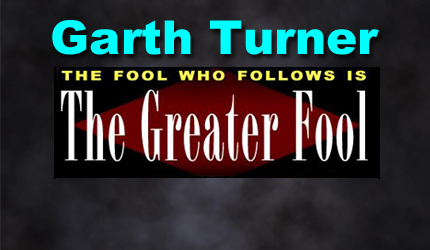August 3, 2020 | Simple

Over the last decade we’ve endured much.
Credit crisis recovery, US debt ceiling panic, oil price collapse, Trump, trade wars, protectionism, Brexit, Bitcoin, Hong Kong, record debt and now the first global pandemic in a century. Stock markets swooned in a serious way four times. Interest rates collapsed. GICs pay 1%. Houses are inflated. Wages got stuck. Lots of people did stupid things. Eight million on the dole and a million unable to pay their house loans when the Covid storm rolled in gave evidence of that.
Through it, this blog has told you the best path was to stay balanced, ignore what you cannot afford, eschew debt, avoid putting everything in one asset, try not to be a cowboy flipping stocks, chasing bullion or crypto, be diversified, reduce tax, stay invested and understand that real risk means running out of money, not losing it. Alas, few listened. Human nature almost always leads us astray. We chase houses. Think short-term. Borrow too much. Get investment advice from moms and brothers-in-law. And we’re complete slaves to emotion. Fear. Greed. Envy. Nesting. FOMO.
But if dogs were in charge of finances, they’d just do what works, and stay at it. Simple. Results are all that matter when you don’t have email and have to pee outside.
Why have I yammered at you for the past ten years about a balanced and diversified portfolio? Because despite all the turmoil and scary stuff we’ve been through, this has proven itself with an average annual return of just a little over 7%. That doesn’t mean seven points a year, every year since there have been times of decline (it lost 3% in 2018, for example). But net worth is built over time and, like dogs know, by doing proven things repeatedly.
Time for a refresher and an update on asset allocation.
First a B&D portfolio generally means 60% in growth stuff and 40% in safer things. The logic is that when stocks sell off in a sweat (like when the virus hit) that other assets will rise in value as money seeks refuge (like bonds). This is exactly what occurred in 2020.
But wait, you cry, interest rates have tanked and bonds pay nothing. Why on earth would you own any?
Because they go up in capital value when stocks fall, thereby slicing volatility. Nobody owns bonds any more to collect interest. That’s so 80s. They’re shock absorbers – with the added bonus that (as stated) when rates shrink the value of bonds plumps. And remember, a good portfolio doesn’t just contain pay-nothing government debt. It also has exposure to provincial and corporate bonds, adding some yield.
But the real payers in the fixed-income part of the portfolio are preferred shares, with a dividend now in the 5-6% range, plus reduced tax. Rate reset prefs are interest-sensitive, too, so when the cost of money falls, their value drops. These days they’re cheap to buy and still churn out that nice return. As central banks inevitably increase rates in future years, these will surely hand over a capital gain.
Growth assets mean equities (plus some real estate investment trusts). But not individual stocks, since most people can’t pick well nor stomach the volatility owning a handful of companies brings. Hubris, vanity and too much testosterone leads many people into thinking they’re smarter than Mr. Market and can pick a few ‘winners’. They can’t. It’s a guess. And guessing is gambling, which is not the same as investing. Don’t.
Better to own whole markets through broad-based equity ETFs – exchange-traded funds. They are cheap and liquid. Far superior to mutual funds. And don’t fall for home-country bias, keeping too much of your growth assets in Canada. Year/year the US market has delivered a 14% return while Bay Street is up just 3%. A good portfolio is a global one – North America, Europe, Asia, emerging markets.
There are other complexities, depending on how much you have to invest. Large and small corporate exposure, for example (small caps will likely lead the economic rebound, as usual). Sector exposure (like health care). US and Canadian-hedged funds (try to stay at least 20% US$-denominated). And don’t have too many positions. Fewer than 20, for sure, even if you have a couple of million in the can.
The current preferred weightings in a 60/40 portfolio are 26% in a variety of bond funds, 13% in preferreds, 20% in Canadian growth assets (including 5% in REITs), 22% in US equities and 18% in international stocks. Of course, try to move things around for tax-efficiency between a non-registered account (dividends and capital gains), an RRSP (sheltering bonds) and your TFSA (the hot stuff).
Finally, ignore the noise. Experts telling you to go gold or more equity exposure, for example. The US election. The virus. Government deficits, central bank policies or prime ministers with ethical blind spots. I mean, does your dog care about what was in the news on Thursday or how last year compared to the average period? Can she even spell MAGA or BLM?
Nope. Results. That’s all that matters. Woof.
STAY INFORMED! Receive our Weekly Recap of thought provoking articles, podcasts, and radio delivered to your inbox for FREE! Sign up here for the HoweStreet.com Weekly Recap.
Garth Turner August 3rd, 2020
Posted In: The Greater Fool











